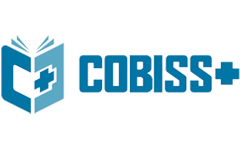Challenges Faced and Employability Skills that Employers Seek in Fresh Graduates in a Third World Country
DOI:
https://doi.org/10.61841/ezken246Keywords:
Gender digital divide, motivation, gender gap, IT sectorAbstract
The aim of this study was to find out what kind of skills fresh graduates need to have when enteringthe job market in a third world and highrisk country. In addition, this study also explored the challenges faced by HR managers in a war torn country. The research was carried out by using the qualitative research method. The data was gathered by using semi-structured interviews with open-ended questions designed to answer to the research questions. Nine Human Resource managers were interviewed based on a list of questions. The key finding was that soft skills that encompass communication and problem solving are the most sought after in the workplace. It is suggested that the Higher Education Institutions collaborate and work closely with employers to minimize the skill gap. Having the knowledge of what employability skills that are key for HRM graduates can help minimize the skills gap and assist educators in producing employable graduates.
Downloads
References
1. AsmaakShafie, L., &Nayan, S. (2014). Employability Awareness among Malaysian Undergraduates. International Journal of Business and Management, 5(8).
2. Andrews, J., & Higson, H. (2008). Graduate employability, „soft skills‟ versus „hard „business knowledge: A European study. Higher education in Europe, 33(4), 411-422.
3. ACAPS, (2019). Afghanistan‟s Jobs Challenge. (Online) Available at https://www.acaps.org/sites/acaps/files/key (Assessed 16 April 2019)
4. Australian Education Council (AEC)/MOVEET (1993). Putting General Education to Work: The Key Competencies Report (The „Mayer Report‟). Canberra: AGPS.
5. Bridgstock, R. (2009). The graduate attributes we‟ve overlooked: Enhancing graduate employability
throughcareer management skills. Higher Education Research and Development, 28(1), 31–44.
6. Braun, V., & Clarke, V. (2006). Using thematic analysis in psychology. Qualitative Research in Psychology, 3,
77–101
7. Central Intelligence Agency (2019). World fact Book. (Online) Available at
https://www.cia.gov/library/publications/the-world-factbook Assessed 15 May 2018).
8. Charlton, E. (2019). These are the 10 most in-demand skills of 2019, according to LinkedIn. (Online). Available at https://www.weforum.org/agenda/2019/01/the-hard-and-soft-skills (Assessed 12 June 2018).
9. Clarke, M. (2018). Rethinking graduate employability: The role of capital, individual attributes and context. Studies in Higher Education, 43(11), 1923-1937.
10. Cobanoglu, C., Dede, P., &Poorani, A. (2006). An analysis of skills and competencies of full service hotel technology managers. Journal of Teaching in Travel & Tourism, 6(4), 19-35.
11. Cleary, M., Flynn, R., & Thomasson, S. (2006). Employability skills from framework to practice: An introductory guide for trainers and assessors. Canberra, Australia: Department of Education, Science and Training.
12. Collet, C., Hine, D., & du Plessis, K. (2015). Employability skills: Perspectives from a knowledge-intensive industry. Education and Training, 57(5), 532–559.
13. Creswell, J.W. (2013). Research design: Qualitative, quantitative, and mixed methods approaches. SAGE Publications.
14. El Mansour, B., & Dean, J. C. (2016). Employability skills as perceived by employers and university faculty in the fields of human resource development (HRD) for entry level graduate jobs. Journal of Human Resource and Sustainability Studies, 4(01), 39.
15. Gray, A. (2016). World Economic Forum. The 10 skills you need to thrive in the Fourth Industrial Revolution. (Online. Available at https://www.weforum.org/agenda/2016/01/the-10-skills (Assessed 10 July 2018).
16. Guba, E. G., & Lincoln, Y. (1989). Fourth generation evaluation. Newbury Park, CA: Sage
17. International Labor Organization, (2019). Employment Services Centers in Afghanistan In Afghanistan, "Men who work, have no time to make war". (online) Available at https://www.ilo.org/global/about-theilo/newsroom/news (Assessed 13 may 2019)
18. Harvey, L. (2002). Defining and Measuring Employability. Quality in Higher Education, 7(2), 97–109.
19. Halpren, E. S. (1983). Auditing naturalistic inquiries: The development and application of a model (Unpublished doctoral dissertation). Indiana University, Bloomington.
20. Heckman, J. (2006), Skill Formation and the Economics of Investing in Disadvantaged Children, Science. 312, 1901-1902.
21. Hillage, J. and Pollard, E. (1998). Employability: Developing a Framework for Policy Analysis. Department for Education and Employment, London. (Online) Available at https://www.researchgate.net/publication/225083565_ (Assessed 16 February 2019)
22. Husain, M. Y., Mokhtar, S. B., Ahmad, A. A., & Mustapha, R. (2010). Importance of employability skills from employers‟ perspective. In Procedia - Social and Behavioral Sciences 7, pp. 430–438). Elsevier Ltd.
23. Jezard, A. (2018). World Economic Forum. The 3 key skill sets for the workers of 2030. (Online) Available at https://www.weforum.org/agenda/2018/06/the-3 (Assessed 15 April 2019).
24. Kőnig, L. S., Juric, P. M., &Koprivnjak, T. (2016). Graduate Employability: A Gap between Perspectives-the Case of Croatia. Advances in Economics and Business, 4(10), 525-538.
25. Koch, T. (1994). Establishing rigour in qualitative research: The decision trail. Journal of Advanced Nursing, 19, 976–986.
26. Lincoln, Y., & Guba, E. G. (1985). Naturalistic inquiry. Newbury Park, CA: Sage.
27. Lokaj, A. S. (2015). Nepotism as a negative factor in organization performance. Academic Journal of Interdisciplinary Studies, 4(2 S1), 9-13.
28. McQuaid, R. W., & Lindsay, C. (2005). The concept of employability. Urban Studies. 42(2), pp. 197-219.
29. McKinsey Global Institute (2018). Skill shift automation and the future of the workforce.(Online). Available at
https://www.mckinsey.com/~/media/McKinsey/Featured%20Insight (Assessed 16 May, 2019).
30. Mitchell, G. W., Skinner, L. B., & White, B. J. (2010). Essential soft skills for success in the twenty-first century workforce as perceived by business educators. Delta Pi Epsilon Journal, 52, 43-53.
31. Merriam, S. B. &Tisdell, E. J. (2016). Qualitative research: A guide to design and implementation, 4th ed. San Francisco: Jossey Bass.
32. Nash, B. E. and Korte, R. C. (1997). Validation of SCANS competencies by a national job analysis study. In O‟Neil, H. F. (ed.) Workforce Readiness: Competencies and Assessments, pp 77–102. Mahwah, NJ: Erblaum
Downloads
Published
Issue
Section
License
Copyright (c) 2020 AUTHOR

This work is licensed under a Creative Commons Attribution 4.0 International License.
You are free to:
- Share — copy and redistribute the material in any medium or format for any purpose, even commercially.
- Adapt — remix, transform, and build upon the material for any purpose, even commercially.
- The licensor cannot revoke these freedoms as long as you follow the license terms.
Under the following terms:
- Attribution — You must give appropriate credit , provide a link to the license, and indicate if changes were made . You may do so in any reasonable manner, but not in any way that suggests the licensor endorses you or your use.
- No additional restrictions — You may not apply legal terms or technological measures that legally restrict others from doing anything the license permits.
Notices:
You do not have to comply with the license for elements of the material in the public domain or where your use is permitted by an applicable exception or limitation .
No warranties are given. The license may not give you all of the permissions necessary for your intended use. For example, other rights such as publicity, privacy, or moral rights may limit how you use the material.
















